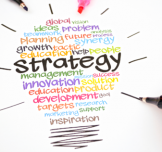7 Social Myths that Hold Organizations Back (Part 1)

When Tony Bingham and Marcia Conner, co-authors of The New Social Learning, began talking with organizations about benefiting from the natural powers of employees learning from one another, they heard more about their obstacles than their opportunities. While some were genuine issues leaders needed to face to move their organizations forward, several were myths, perpetuated by old-school practices and a fear of losing control.
For instance, people often talked about social learning as a wildly new practice, challenging the way training has been delivered. In fact, social learning is an approach that has always happened alongside instructor-led courses, as learners compared their experiences with one another, asking questions, and putting new information into the context of their jobs. What’s new are the social media tools in the pockets and purses of more than 80% of the population, that now extend learning’s reach.
In the book, Bingham and Conner encourage people in organizations to connect, collaborate, and work with one another–sometimes even without digital tools–and to look at myths that hold people and organizations back.
This article will focus on some of the myths that the authors found:
1. Social learning is new
Most of what we learn at work and elsewhere comes from engaging in networks where people co-create, collaborate, and share knowledge, fully participating and actively engaging, driving, and guiding their learning through whatever topics will help them improve. Social learning is not a new approach to traditional training or collaboration; it builds upon it!
Training gives people solutions to problems already solved. Collaboration addresses challenge no one has overcome before. The new social learning allows us, as Stowe Boyd (who first coined the term social tools and continues to observe their influence) puts it, “[to grow] bigger than my head. I want to create an idea space where I can think outside my mind, leveraging my connections with others.”
2. You will need digital tools
Social learning is not the same as e-learning, the term used to describe any use of technology to teach something intentionally. Furthermore, it is not meant to replace traditional forms of communication, but rather to augment and enhance them. The use of social media does not require sophisticated technical understanding or investment in digital systems, but rather a willingness to take the conversation beyond the classroom, boardroom, etc.
3. You will need policies
It doesn’t matter what policies or extreme precautions are put in place. These tools are now ubiquitous, with more people across the world having an active presence on Facebook than comprise the populations of Russia and all of the European countries combined.
Rather than creating strict policies banning or limiting collaborative systems, you should educate people how to use them effectively for work. Social tools are the future of collaboration and learning at work, so the more you prepare people for how to use the tools respectfully, and how to apply good social practices, the better.
4. There is no way to show ROI
How do you know whether what you are doing is actually making an impact?
Many organizations answer this question by reporting financial metrics, including return on investment (ROI). Amanda Slavin, CEO of CatalystCreativ, instead asks those she works with to consider what she calls “ripples of impact.” These layers of impact are best described through rich stories, integrating learning with new relationships, and integrating new opportunities for growth and development that were uncovered as a result of the experiences that created the ripples.
In the next part of the article, we will take a look at the rest of the myths that lead to holding the organization back and lessen its productivity.


































































EgyptInnovate site is not responsible for the content of the comments